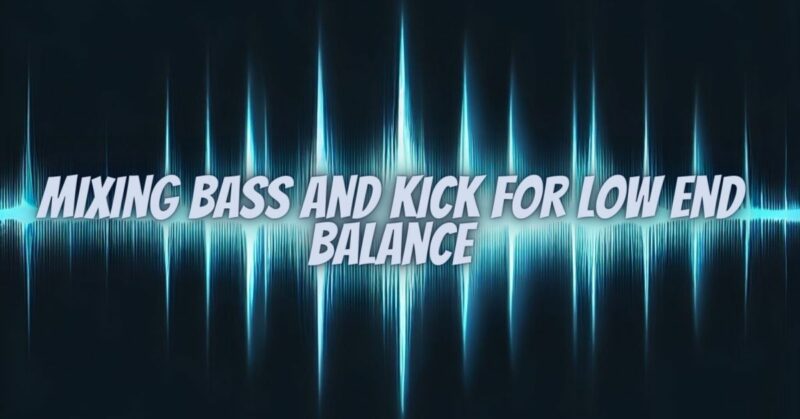Bass and kick drum are two of the most important elements in any mix, and getting the balance between them right is crucial for achieving a solid and impactful low end.
What is the low end?
The low end is the frequency range below around 200Hz. This is the range of frequencies that is responsible for the bass and weight of a mix.
Why is the low end important?
The low end is important because it provides the foundation for the rest of the mix. It gives the mix a sense of weight and power, and it can also help to create a sense of space and depth.
How to balance bass and kick drum
There are a few key things to keep in mind when balancing bass and kick drum:
- Frequency range: Bass and kick drum both occupy the same frequency range, so it’s important to make sure that they don’t clash with each other. One way to do this is to use EQ to carve out some space for each instrument. For example, you might boost the low frequencies of the bass and cut the low frequencies of the kick drum.
- Level: It’s also important to make sure that the bass and kick drum are at the right level relative to each other. If the bass is too loud, it will overwhelm the kick drum and make the mix sound muddy. If the kick drum is too loud, it will drown out the bass and make the mix sound thin.
- Timing: The timing of the bass and kick drum is also important. If they’re not in time with each other, it will make the mix sound loose and sloppy. One way to ensure that the bass and kick drum are in time is to sidechain them together. This means that the kick drum will trigger a compressor on the bass track, which will cause the bass to duck out slightly when the kick drum hits. This will help to create a more cohesive and punchy low end.
Here are a few additional tips for mixing bass and kick drum:
- Use reference tracks: One of the best ways to learn how to mix bass and kick drum is to listen to reference tracks. Pay attention to the way that the bass and kick drum sound in your favorite mixes, and try to replicate that sound in your own mixes.
- Experiment: There is no one-size-fits-all approach to mixing bass and kick drum. The best way to find what works for you is to experiment. Try different EQ settings, different levels, and different timing.
- Don’t be afraid to ask for help: If you’re struggling to mix bass and kick drum, don’t be afraid to ask for help from a more experienced engineer. They can give you some tips and help you to get the sound that you’re looking for.
Mixing bass and kick drum is an important part of creating a solid and impactful low end. By following the tips above, you can learn how to balance these two instruments and create a low end that will support and enhance the rest of your mix.


